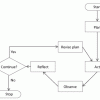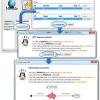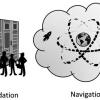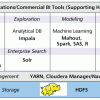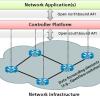Strategic advice to leverage new technologies
Technology is at the heart of nearly every enterprise, enabling new business models and strategies, and serving as the catalyst to industry convergence. Leveraging the right technology can improve business outcomes, providing intelligence and insights that help you make more informed and accurate decisions. From finding patterns in data through data science, to curating relevant insights with data analytics, to the predictive abilities and innumerable applications of AI, to solving challenging business problems with ML, NLP, and knowledge graphs, technology has brought decision-making to a more intelligent level. Keep pace with the technology trends, opportunities, applications, and real-world use cases that will move your organization closer to its transformation and business goals.
Recently Published
Today, IT executives are dealing with major trends and substantial technological and business issues in any cloud transformation of their company. Based on our 2014/2015 research, this Executive Report, the first of two in a series, covers four major questions executives regularly ask us.
Fortunately in the last few years, cloud platforms have become more standardized and instrumented, virtualization has become more pervasive throughout standard platforms, and automation frameworks have become available that enable us to manage virtualized resources automatically.2 This allows organizations that plan to adopt or are already are using SDIs to leverage a strategy already in use in many other complex environments: dashboarding.
Much of our struggle with unsatisfied information needs finds its root cause in imperfect information system design, and particularly in poorly designed conceptual models.
Enterprise Architecture and Digital Transformation
Architecture is becoming more visible. It is necessary to create a solution that is capable of high-speed change and linked to analytics and the increasing stream of infrastructure data that has become available from the Internet of Things. The possibilities with this new architecture are immense.
Data Lakes and Big Data Exploration Platforms
This Executive Update explores how some organizations are using the data lake as the foundation for their enterprise data exploration platform.
Traditional computer networks are complex and very hard to manage. To express the desired policies, network operators need to configure each individual network device, one by one, either manually or with the use of low-level scripts. In addition to configuration complexity, network environments have to endure the dynamics of faults and adapt to load changes.
For over a decade, the US Navy has been modernizing many of its large-scale, mission-/safety-critical, and software-intensive national security systems using an open systems architecture (OSA)1 approach, which leverages capable and reliable standards-based commercial off-the-shelf (COTS) software infrastructure components and modern software development practices for iterative and incremental development. As with other mission-/safety-critical domains, such as air traffic management, power grid, and automotive systems, a key goal of the Navy's OSA strategy has been to field and manage affordable and superior capabilities more rapidly at reduced cost.




